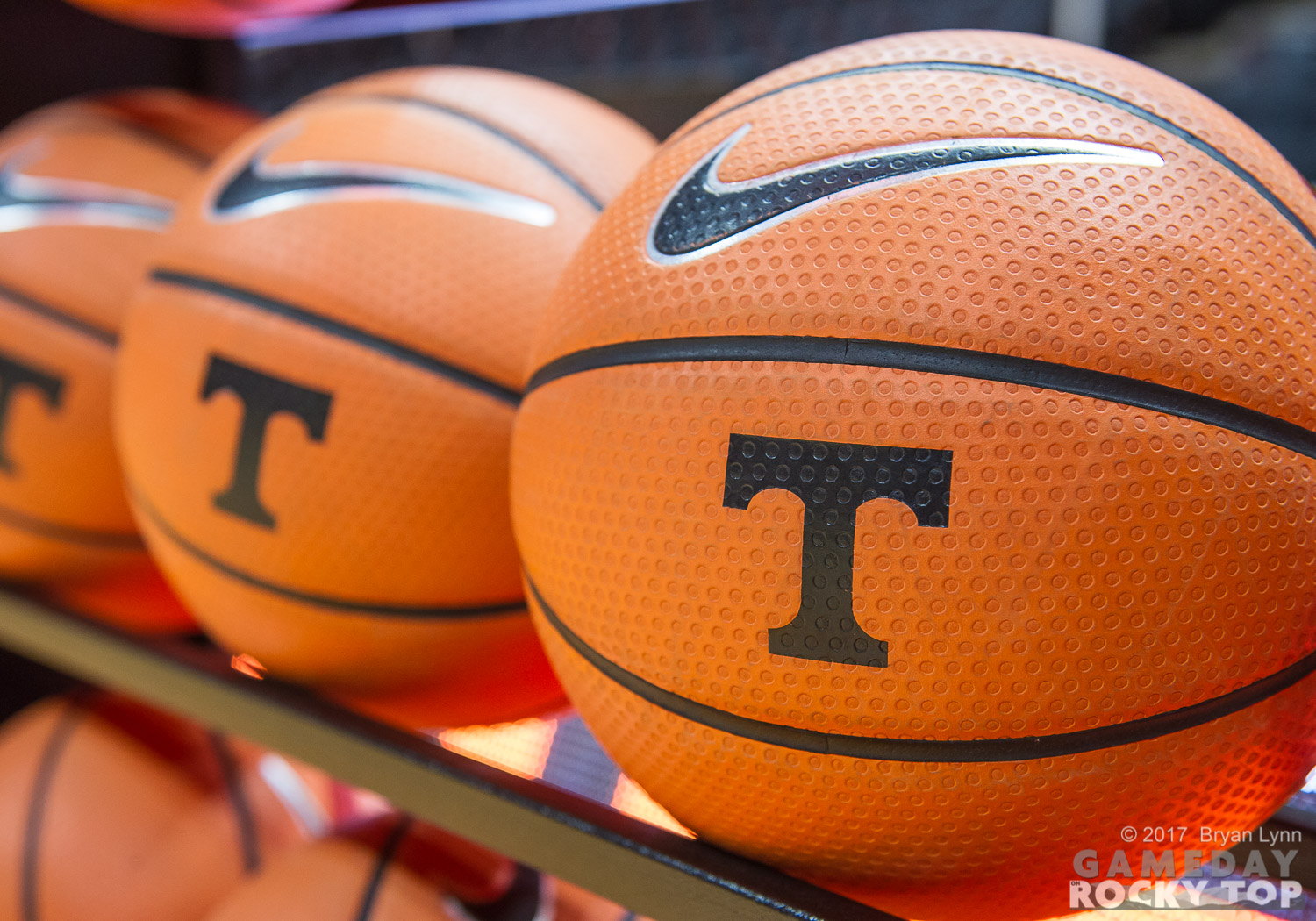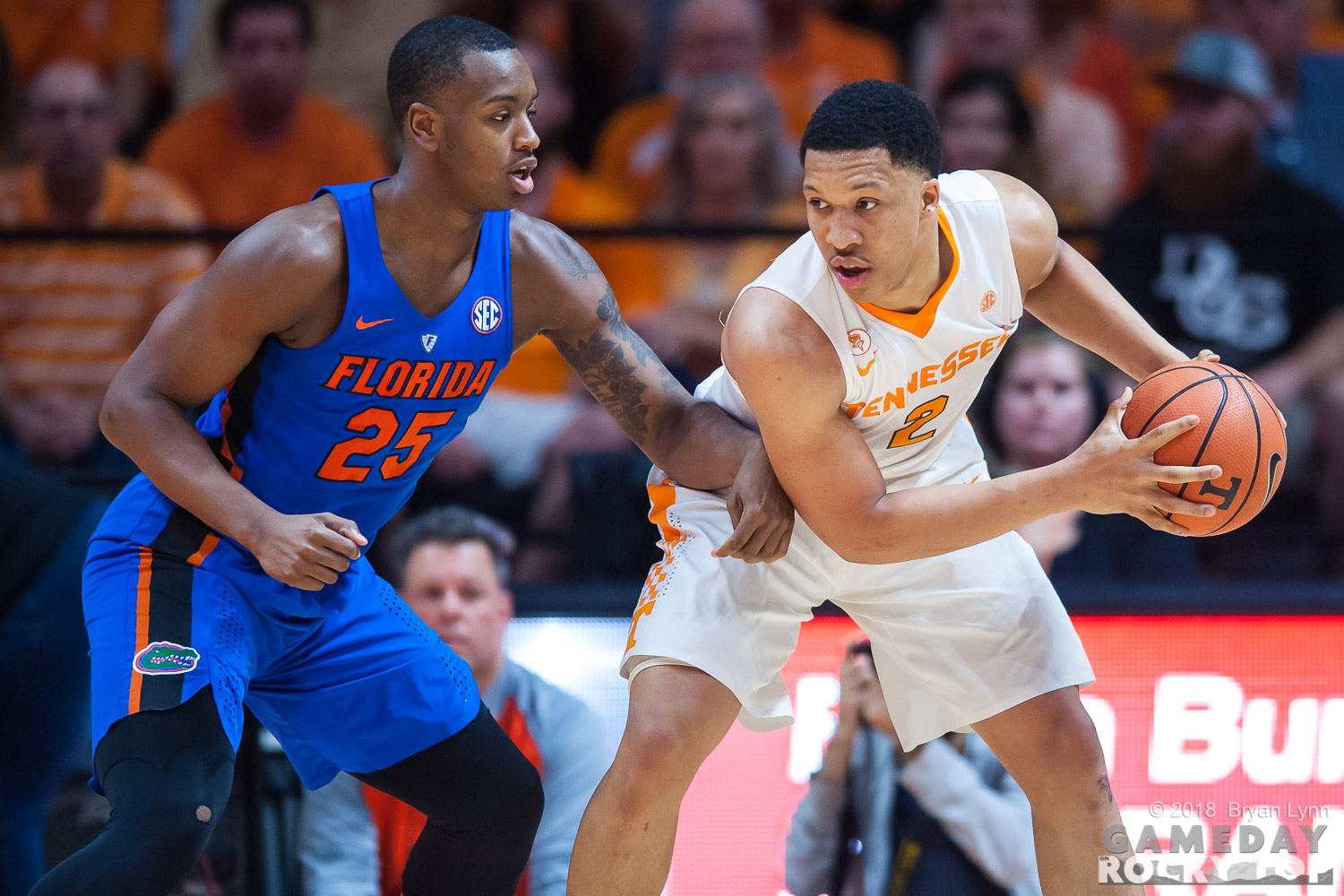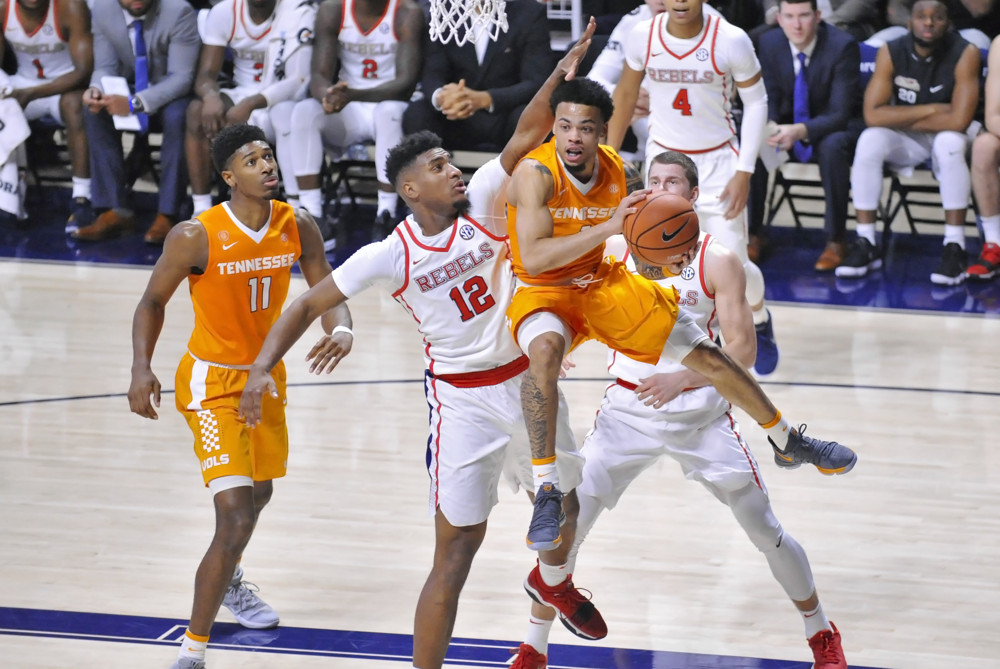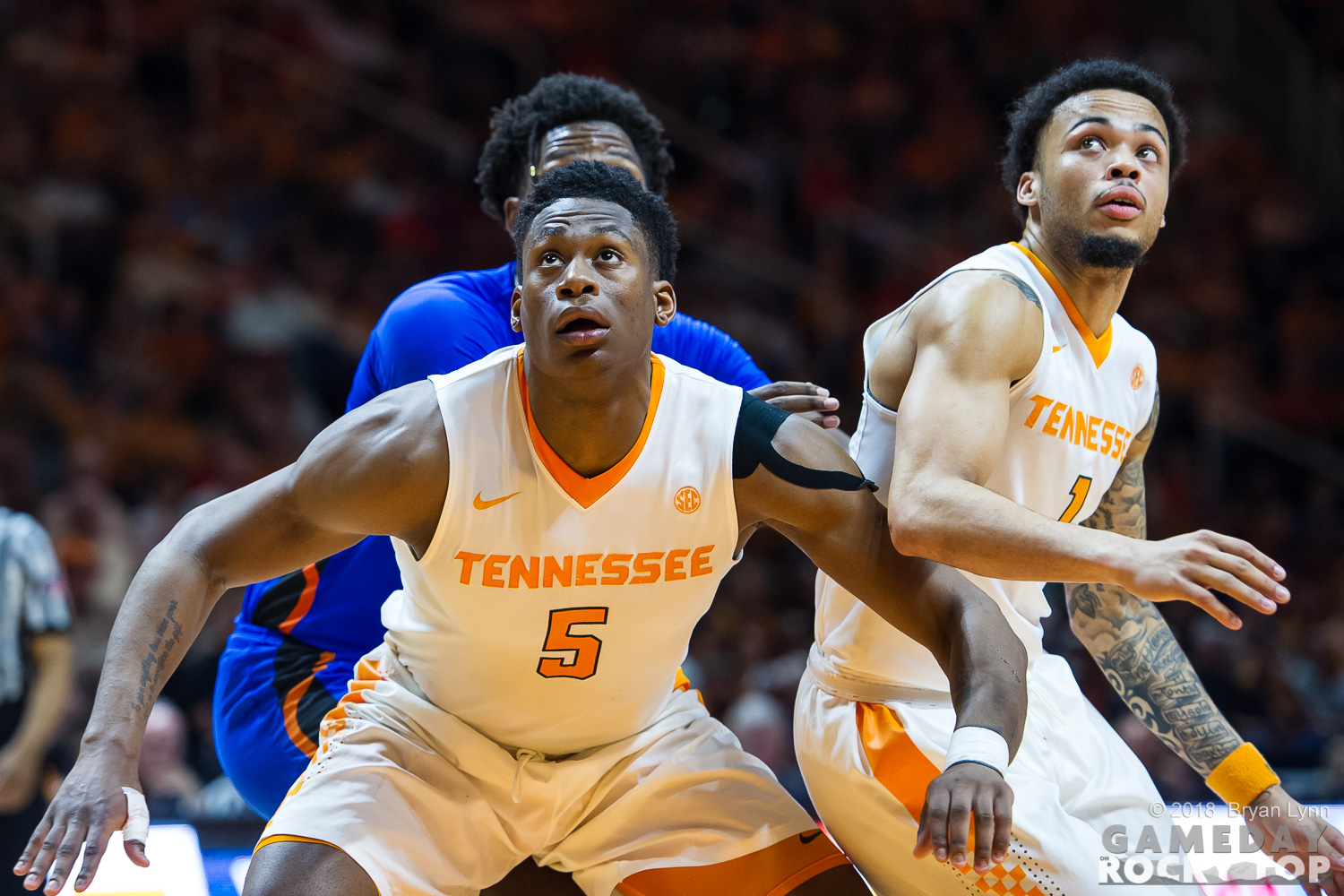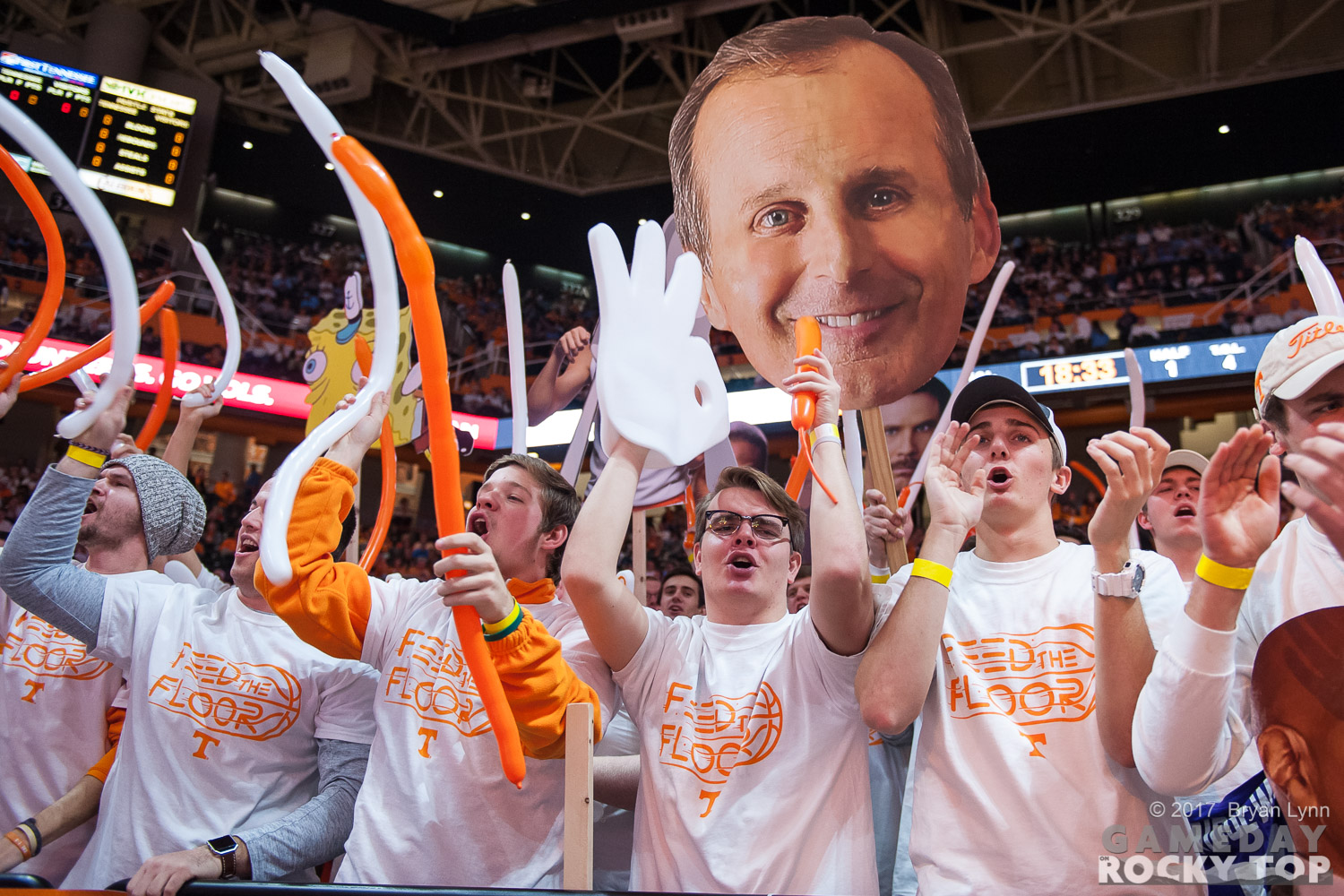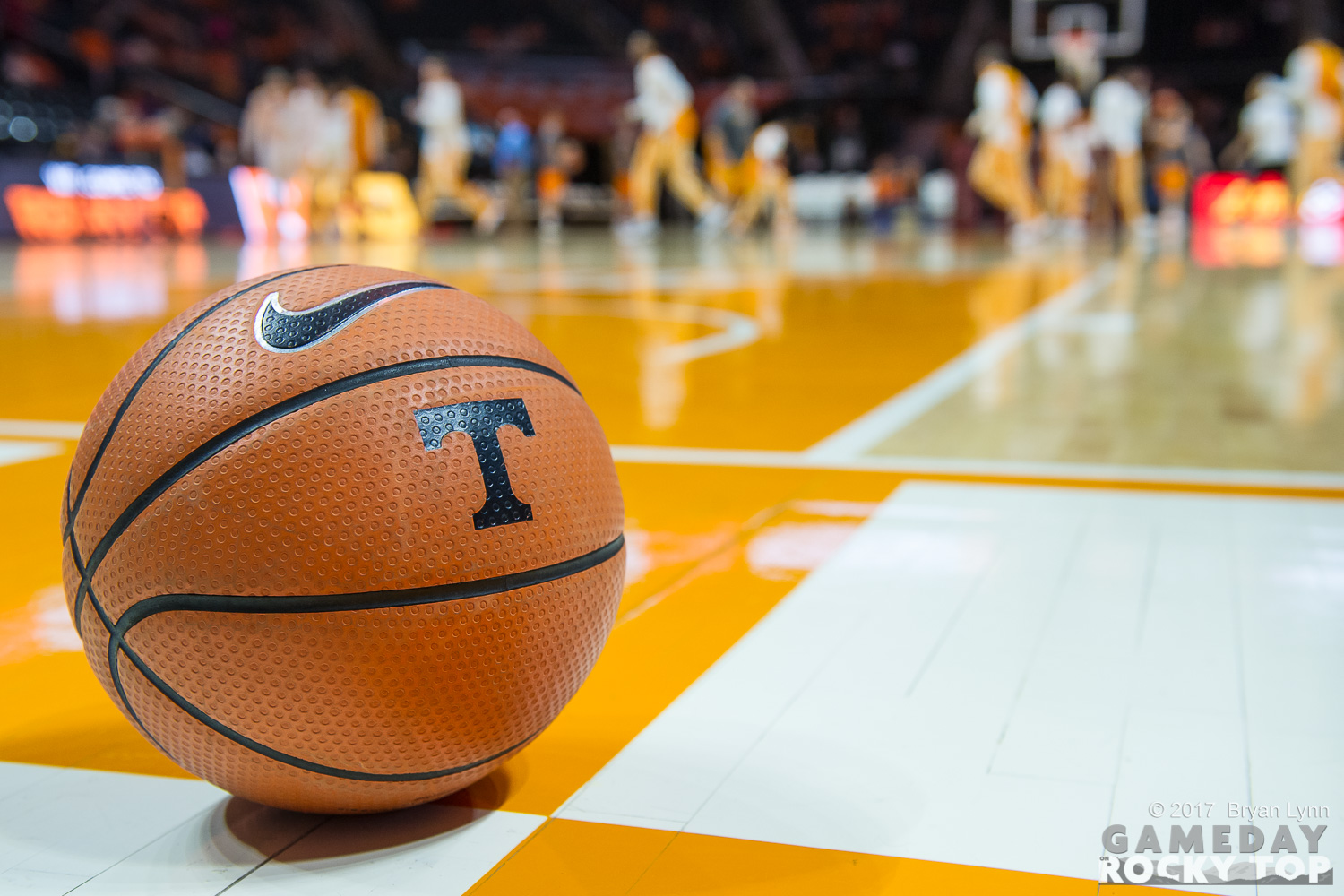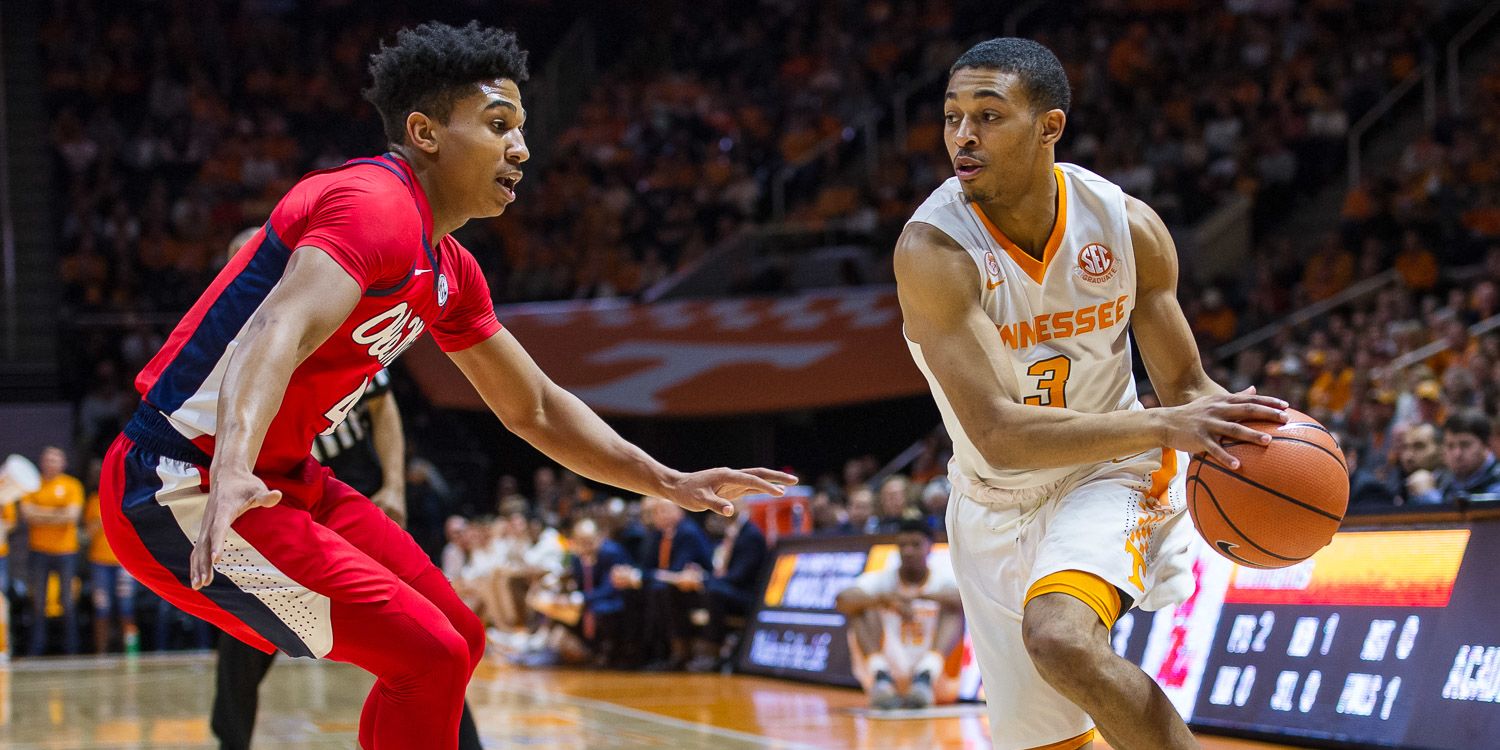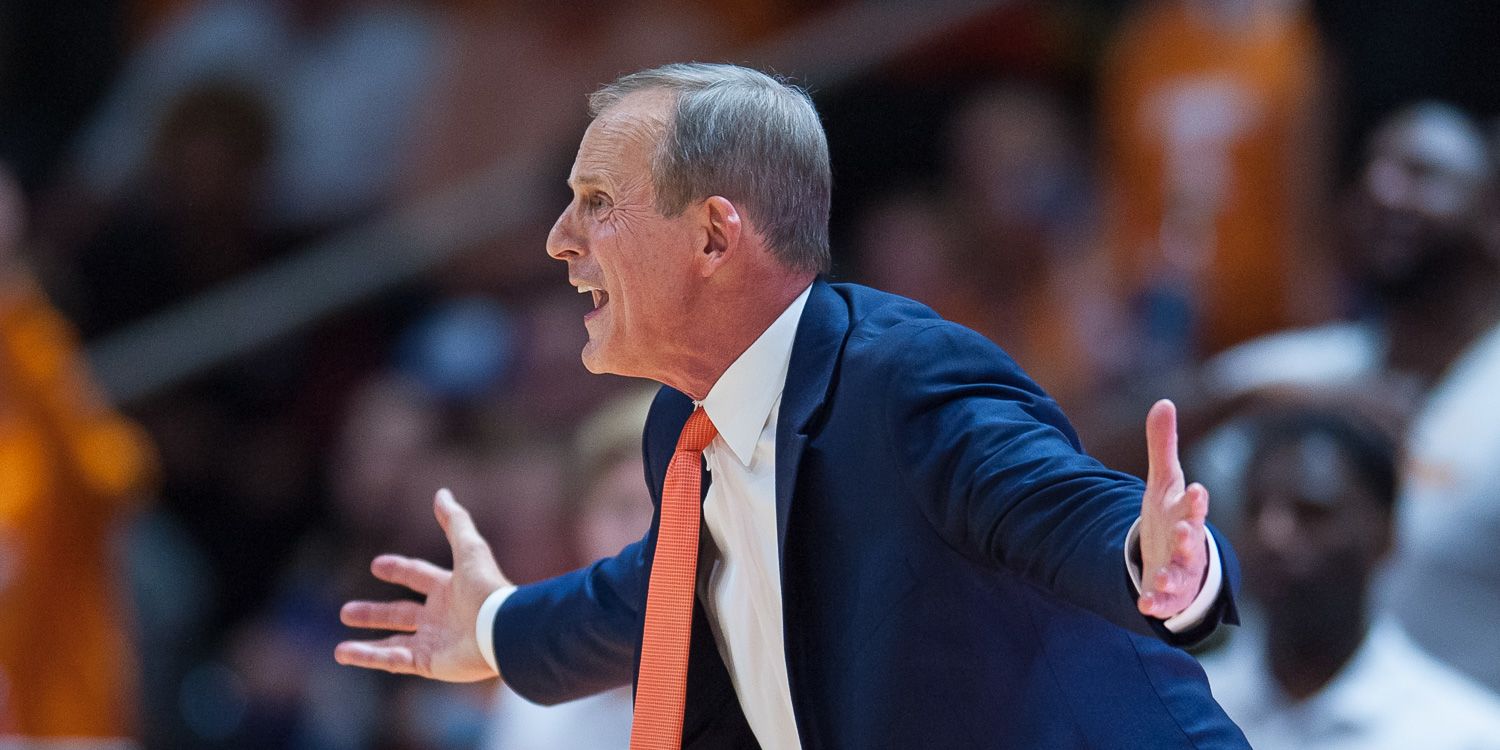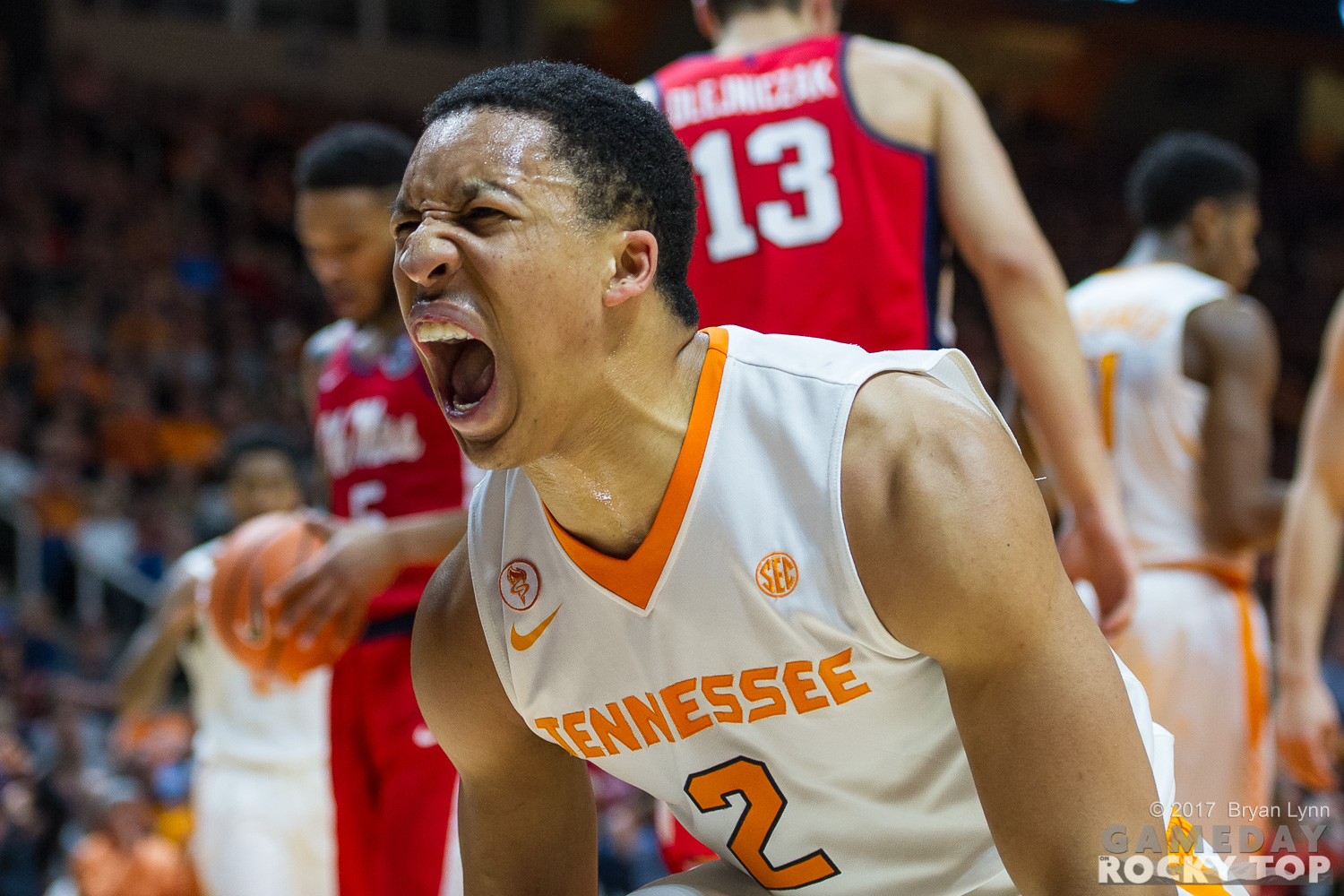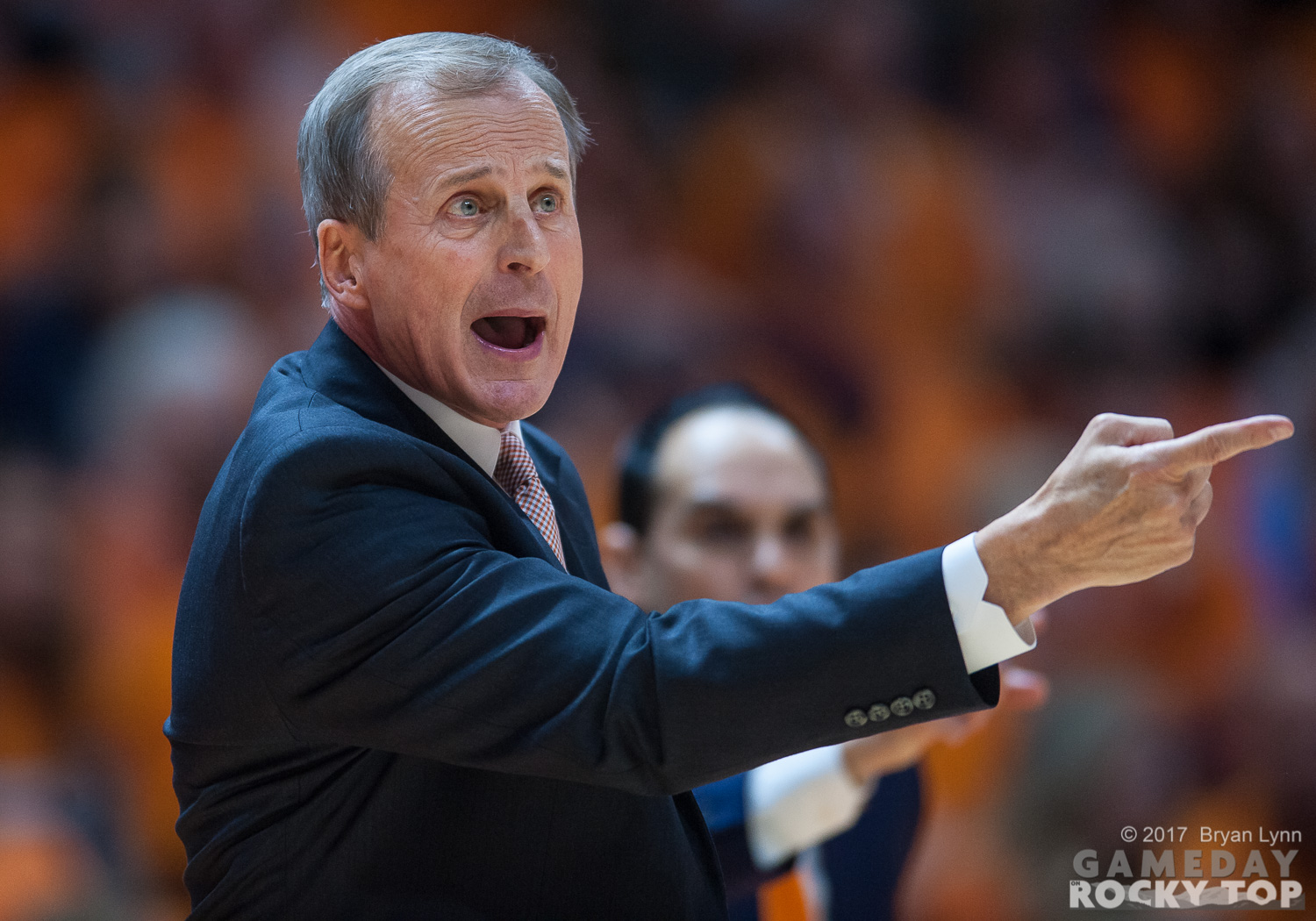We’ve been Mississippi State.
For all three of Cuonzo Martin’s years and the final season under Bruce Pearl, the Vols came to the last week of the regular season on the bubble. There were some games like this one, when a tournament-bound team came into Knoxville, one last opportunity for the home team. Sometimes we won. Sometimes we lost.
It’s been a long time – eight years – since the Vols were the alpha in this scenario. We’ve been more accustomed to the hunger and desperation of the team in pursuit. All that makes it a tough ask for the alpha, on the road on a night like tonight. And the Bulldogs looked the part early, leading 25-17 in the first half.
For all of those reasons, this might have been Tennessee’s best win of the season. And there is no better time than the soon-to-be-March present for that.
Mississippi State was 27th in KenPom’s defensive efficiency ratings coming into this game. Tennessee carved them up for 56.3% from the floor.
The Bulldogs put two 6’10″+ guys on the floor and made it difficult for Tennessee to play through Grant Williams from the opening tip. No problem: for the second game in a row, Admiral Schofield took over. After a career-high 25 at Ole Miss on Saturday, Schofield added 24 tonight on 9-of-18 from the floor. And Tennessee was intentional: no other player took more than eight shots, Grant Williams had only three shots, and the Vols didn’t settle for threes, finishing just 4-of-11 from the arc.
And they torched the Bulldogs, at one point making 11 consecutive field goals in the second half. That’s hard to do in warm-ups.
Meanwhile Tennessee’s defense helped break open a six-point halftime lead by holding the Bulldogs to just two field goals in the first eight minutes of the second half. Quinndary Weatherspoon had 17 points, but got no consistent help. The Bulldogs went 4-of-20 from the arc, missed six free throws, and finished at just 39.2% from the field. A team with only one home loss on the year was dismantled on its own floor in the second half.
And look, I think Mississippi State is good. I just don’t think they’ve played a team like Tennessee in Starkville.
Tennessee’s best result is still their victory over Purdue. Sweeping Kentucky is historic, and the win at Rupp three weeks ago will be remembered for a long time. But there was a quiet fear in its aftermath, quickly replacing whispers of a one seed: had the Vols peaked?
Tennessee left Lexington and lost in Tuscaloosa by 28, narrowly escaped South Carolina, then lost at Georgia. They gutted out a win against Florida, then went from up 20 to up four to up 21 to winning by eight at Ole Miss. There were some nice moments in there, but nothing that made you feel as confident as we did walking out of Rupp.
Tonight, on the road with everything on the line for Mississippi State, I think the Vols played their best game of the year. They won by 22, locked up at least the two seed in the SEC and stayed alive to win the league. They kept themselves in the conversation for a two or three seed in the NCAA Tournament. And, most importantly in the last week of the regular season, they proved their best basketball is on the floor right now and not behind them. This is a very, very, very good sign.
Go Vols.
